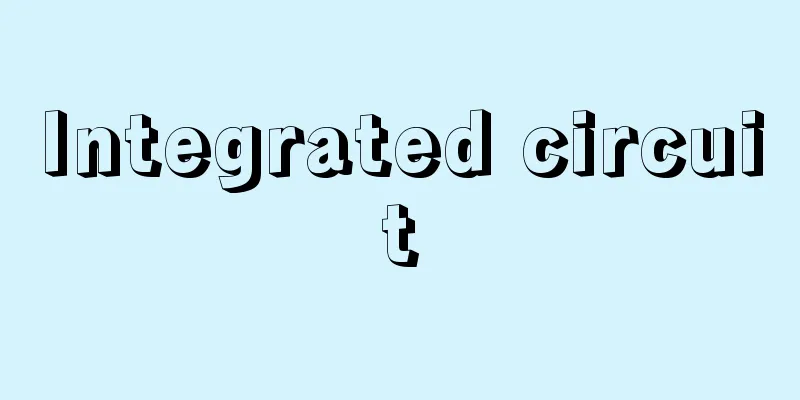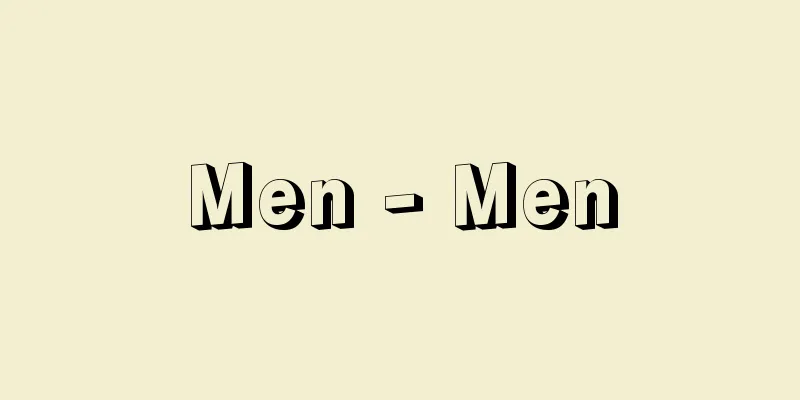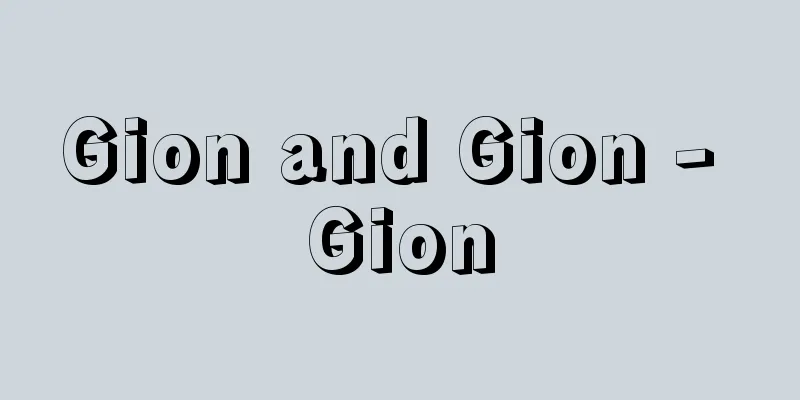Integrated circuit

|
A type of electronic circuit that integrates many circuit elements such as transistors, diodes, resistors, and capacitors on or within a single substrate, and connects these elements with wiring on the substrate surface to create a high-density circuit structure. Often abbreviated as IC. [Masatoshi Mitaka] Major ClassificationDepending on the manufacturing process and function, integrated circuits can be classified into film ICs, semiconductor ICs, and hybrid ICs that combine the above two. Film ICs are made by creating circuit elements flat on a thin insulating substrate, and wiring is formed by layering a metal film on top of it. They are classified into thin film and thick film according to the structure of the film that creates the conductor pattern of the interconnection of resistors and capacitors, and the manufacturing method. The former is usually made with a thin metal film of less than 0.1 micrometers, while the latter is made with a pattern of about 10 micrometers thick by screen printing a paste-like material. Thin film ICs can obtain fine patterns by photoetching, and the degree of integration is high, but the process is complicated and the substrate must have a flat surface, which reduces the allowable power consumption. Thick film ICs are made by printing patterns, so the process is simple, but there is a limit to the accuracy and the degree of integration is not high. Since it is not possible to create active elements such as transistors and semiconductor ICs with these film ICs, hybrid ICs are made by mounting active elements and combining them with a film that forms a circuit including passive elements such as capacitors and resistors. All active and passive circuit elements can be created in a semiconductor substrate, and a semiconductor IC or monolithic IC (monolithic means a single piece of stone in Greek) is created by creating these elements in a substrate and connecting them with wiring in the substrate or on its surface. Semiconductor ICs are used in a much wider range of applications than other ICs, since they can create complete electronic circuits that contain all the necessary circuit elements. For this reason, when people generally talk about integrated circuits, they often mean semiconductor ICs. Semiconductor ICs are classified according to the type of transistor used within the IC. They are divided into bipolar ICs, MOS ICs (MOS is an abbreviation for metal oxide semiconductor), and charge-coupled devices (CCDs) that utilize the unique behavior of carriers (charge carriers) in semiconductors. Bipolar ICs mainly use npn transistors, and often use a mixture of two types of transistors. MOS ICs can be either ones that use only one type of transistor or ones that use two types of transistors. The former includes PMOS ICs, which use only transistors that use holes, and NMOS ICs, which use only transistors that use electrons. The latter includes CMOS ICs, which use both types of transistors as a pair, and the latter, which consumes less power, has been used exclusively in ICs since the 1980s, especially in digital applications. All semiconductor ICs use lithography technology to form fine patterns on a single semiconductor chip. In this case, the finer the pattern that creates the circuit elements, the more circuit elements can be created on one chip, i.e., the higher the integration density. The integration density is expressed as the number of bits per chip for memory ICs, and the number of gates for logic ICs. For memory ICs, ICs with a density between 1 kilobit (equivalent to 100 gates in logic circuits) and 100 kilobits (equivalent to 10 kilogates in logic circuits) are called large-scale integrated circuits or LSIs (short for large scale integrated circuits), while ICs with a density between 1 kilobit and 10 megabits (equivalent to 1 megagate in logic circuits) are called very large scale integrated circuits (VLSIs, short for very large scale integrated circuits), and anything above that is called ultra-ultra LSIs (ULSIs, short for ultra large scale integrated circuits). [Masatoshi Mitaka] historyIntegrated circuits were developed primarily in the United States, motivated by the need to make electronic circuits smaller and lighter for space and military equipment. To make them smaller and lighter, small parts had to be assembled at high density, so the entire circuit was divided into parts that were easy to separate, and each part was assembled on a standardized board. However, this method had limitations on mass production, let alone making them smaller and lighter, because the circuit components such as resistors were made separately from the board. To overcome these limitations, film ICs, which were made by processing a film attached to an insulating board to make resistors and wiring, and hybrid ICs, in which transistors and diodes were attached to the wiring of the film IC, were developed and completed between the end of World War II and 1960. Meanwhile, semiconductors made it possible to manufacture not only resistors, but also transistors and diodes. For this reason, the emergence of semiconductor ICs was predicted in the UK in 1952, five years after the invention of the transistor, and a prototype was produced by Texas Instruments in the US in 1959. The semiconductor ICs created in this way were initially difficult to optimize circuit design due to limitations in integration, and yields were low due to strict manufacturing conditions. As a result, their prices were significantly higher, but they were first adopted in military and space electronic equipment, which prioritized performance over price. Later, as the circuits and manufacturing processes were improved and yields increased, prices fell through mass production, and new demand began to emerge one after another. In Japan, there was almost no demand for space development or military use like in the United States, and the country relied on civilian demand, which placed emphasis on economic efficiency, so from around 1966 (Showa 41), when companies began to seriously engage in IC production, to around 1970, all companies were plagued by losses and production did not grow. The beginning of the spread of integrated circuits in Japan was their adoption in calculators (electronic desktop calculators) and television receivers. Production of the former grew steadily in 1969 and for the latter from around 1972, and by 1975 the production value of semiconductor ICs had surpassed that of transistors ( ). With integrated circuits, the more identical chips are produced, and the more elements are integrated onto the same chip, the lower the unit price per element. The best example of this is seen in memory elements (IC memory). Looking at the annual change in the price per bit, which is proportional to the memory capacity of a memory element, the cost per bit steadily falls as the years go by and the benefits of mass production become apparent. However, if the same level of integration is produced, the decline in the unit price eventually reaches a saturation point. Therefore, if the number of elements integrated onto one chip is increased and the number of bits per chip is quadrupled, it becomes possible to significantly reduce the unit price again ( ). As described above, to steadily reduce the cost per bit year after year, it is necessary to develop highly integrated ICs every few years, increase the number of elements integrated on one chip, and increase the number of bits per chip. Looking at the trend in the number of bits per chip of memory elements manufactured since 1960, the number of bits per chip increased at a rate of about double per year for the 15 years from 1960 to 1975. However, since then, the rate has been gradually slowing down, doubling every two years and quadrupling every three years ( ). [Masatoshi Mitaka] Operating principle and manufacturing methodSemiconductors play an important role in integrated circuits. In particular, in semiconductor ICs, most circuit components, from transistors to resistors, are made of semiconductors. Depending on the impurities added, semiconductors can be n-type semiconductors (semiconductors that conduct through electrons) or p-type semiconductors (semiconductors that conduct through holes), and the conductivity of each can be changed by the amount of impurities added. A pn junction is when a p-type semiconductor and an n-type semiconductor are connected together, and a bipolar transistor is made by combining two junctions, pnp or npn. A pn junction is a diode, since current flows well when the p-type semiconductor is made positive, but no current flows when the opposite is true. Also, when a voltage is applied in the reverse direction, the state in which no current flows is the same as when a thin insulator is sandwiched between the p-type and n-type semiconductors in a pn junction, and the two semiconductors are connected as the same crystal, but are electrically isolated from each other. In semiconductor ICs, many circuit components are built into a single semiconductor chip, and these components are mainly isolated from each other by the above methods. A thin insulator sandwiched between semiconductors has the same structure as a capacitor, and a pn junction with a reverse voltage applied can also be used as a capacitor. In bipolar semiconductor integrated circuits, a high-resistivity p-type semiconductor is used as the substrate, within which circuit components such as transistors, diodes, capacitors, and resistors are created, but an n-type semiconductor layer is always interposed between the p-type substrate and each component, and each component is electrically isolated by the pn junction formed between this layer and the substrate. A distinctive feature of semiconductor ICs is that circuit components are created simultaneously, and resistors and transistors can be created with the same amount of effort. Therefore, some transistors are sometimes used as resistors, capacitors, and diodes ( ). In MOS ICs, MOS transistors are made using the oxide film on the crystal surface, so resistors and capacitors are often also made on the surface. However, diodes use pn junctions in the substrate, just as in bipolar ICs. Circuit components in MOS ICs can be separated using oxide films, but often pn junctions are used, just like in bipolar ICs ( ). Semiconductor ICs are made through many processes, with the main processes being single crystal production and wafer (thin, disc-shaped substrate) processing, plus a mask manufacturing process. In the single crystal production process, pure silicon is extracted from silica, the raw material for silicon, and made into single crystals, which are then cut and polished to create silicon wafers for the substrate. In the wafer processing process, a pre-made mask is fitted to the wafer, and various processes are carried out to form a pattern, turning it into an IC chip. These are then assembled, wired, and sealed in the assembly process, and inspected before being shipped as a product ( ). [Masatoshi Mitaka] FeaturesThe general characteristics of integrated circuits are that they are small, lightweight, and consume little power. As a result, when integrated circuits are used, the application devices are also small, lightweight, consume less power, and are inexpensive. The best example of this is the pocket calculator. Around 1964, pocket calculators used discrete semiconductors such as transistors and diodes, but in 1968 they began to use small-scale integrated circuits (SSI) and medium-scale integrated circuits (MSI), and finally in the 1970s they began to use a single large-scale integrated circuit (LSI). As a result, in the quarter century since the mid-1960s, there has been a great deal of progress, with the volume reduced by about 4,000 times, the weight reduced by 870 times, and the price reduced by about 700 times. This trend has continued to occur in various products since then, and has greatly contributed to the improvement of performance, weight reduction, size reduction, and price reduction of industrial products. In integrated circuits, each component is small, and is made in a structurally strong crystal. Since there is no soldering for wiring between components, integrated circuits are resistant to mechanical forces such as vibration and shock, and are highly reliable. Even if the integration level increases due to developments in manufacturing technology, the reliability per chip does not change. For example, in the case of MOS ICs, the number of elements contained inside has increased dramatically by 250,000 times in the 40 years from around 1970 to 2010, but the reliability has hardly changed. Therefore, the reliability per element increases with each year's increase in integration level. However, in terms of heat dissipation and current density, it is not necessarily advantageous for high-power applications that require a certain amount of area, or for ultra-high frequency applications that strongly require three-dimensional arrangement of elements and optimization of structure. In addition, as the integration level increases, the design becomes more labor-intensive. For this reason, integrated circuits are not suitable for applications with frequent design changes and low production volume. Looking at the characteristics of integrated circuits for various types of ICs, semiconductor ICs require large capital investment and development costs, but are excellent in terms of integration and mass production, with MOS ICs being particularly superior in this regard. MOS ICs consume little power and are inexpensive, and their operating speed increases as element sizes become smaller with higher integration. Bipolar ICs can operate at high speeds, but consume a lot of power. Hybrid ICs cannot be as integrated as semiconductor ICs and are less suitable for mass production, but they do require less capital investment and development costs, and have the advantage of being able to incorporate inductance. High frequency, high power ICs can also be made. However, there is a limit to how small they can be made, and the price cannot be reduced significantly. According to a survey by the Ministry of International Trade and Industry (at the time) in fiscal 1980, capital investment in semiconductor ICs was 121 billion yen, more than 10 times that amount five years earlier. Furthermore, by the beginning of the 1990s, it had nearly doubled to over 1 trillion yen. However, after fluctuating, such as dropping to 583 billion yen in 1993, it rose to a record high of 1.4965 trillion yen in 2007. However, due to the recession of the global economy and the decline of the Japanese semiconductor industry, it fell to 289.1 billion yen, less than one-fifth of the previous figure, in 2009. The global market has since recovered, but the growth in Japan has not been as remarkable. Research investment shows a similar trend. Meanwhile, the size of the Japanese semiconductor market showed a remarkable increase in the early days, but has since continued to increase, albeit with fluctuating trends. The market size is growing because applications are expanding significantly as more and more advanced integrated circuits are released into society every year. Producing high-performance products at low cost requires technological innovation, which in turn requires cutting-edge research with large research investments. Furthermore, applying the results of such cutting-edge research in production requires the use of expensive equipment that incorporates the best of modern technology, precisely controlled by computers. Furthermore, the manufacturing site environment and equipment must be kept in optimal condition, even if this requires large expenditures. In this way, a major feature of semiconductor ICs is that they are produced by combining cutting-edge knowledge in a variety of fields with expensive equipment. [Masatoshi Mitaka] ApplicationsLooking at the results for 1984 in Japan, computers and their terminal devices accounted for about 36% of total sales, VTRs 14%, audio equipment 8.3%, and communication equipment 8%, while calculators, which accounted for a little over one-fifth eight years earlier, had fallen to 2.5%. This indicates that the use of integrated circuits has spread to the general public, and Japan is breaking away from its unique growth supported by calculators. The next most common applications are televisions, office equipment, measurement and control equipment, and watches. Of particular note is the increase in sales of watches and automobiles, which were not previously considered electronic equipment. This indicates that the development of microcomputers has not only led to the automation and high performance of electronic equipment, but also to the generalization of high performance through electronic control in the field of mechanical equipment such as watches, automobiles, cameras, sewing machines, and machine tools. For example, in the case of watches and cameras, the mechanical parts have been replaced with ICs to improve performance and operability. In the field of sewing machines and machine tools, in addition to automation and high performance, fields are being developed that can respond to diversification using computer programs. A notable trend in IC demand by application since the 2000s is the decline in the proportion of ICs used primarily in personal computers, with those used in automobiles rising instead. In automobiles, microcomputers are being used to optimize engine control and improve safety and fuel efficiency. As IC performance becomes more advanced and diversified, it is expected that ICs will be used in an ever-increasing number of different applications, helping to create a more convenient and comfortable society. [Masatoshi Mitaka] "Electronics Pocket Book, 3rd Edition (1982, Ohmsha), edited by the Electronics Pocket Book Editorial Committee" ▽ "Basic Technology of Integrated Circuits, by Kyoji Ito and Yokichi Ito (1983, Shokodo)" ▽ "LSI Process Engineering, revised 2nd edition (1988, Ohmsha), by Migataka Masatoshi" ▽ "Fundamentals and Applications of Integrated Circuits, edited by Ikeda Tetsuo, by Tetsuzo Tanimoto and Nobuhiko Tsunemi (2001, Morikita Publishing)" ▽ "Understanding the Secrets of Integrated Circuits, by Uenishi Katsuzo (2004, Nippon Riko Publishing Association)" ▽ "Easy-to-Learn Integrated Circuit Engineering, by Kuroki Yukinori (2005, Shokodo)" [Reference items] | | | | | | |©Shogakukan "> Changes in the production value of electronics parts (Japan) ©Shogakukan "> Annual trends in memory element (IC) prices (Japan) ©Shogakukan "> Annual change in the number of elements per integrated circuit chip (… ©Shogakukan "> Circuit components of bipolar semiconductor integrated circuits (Fig.… ©Shogakukan "> Circuit components of MOS semiconductor integrated circuits (Figure E) ©Shogakukan "> Integrated circuit manufacturing process (Fig. F) Source: Shogakukan Encyclopedia Nipponica About Encyclopedia Nipponica Information | Legend |
|
電子回路の一種で、トランジスタ、ダイオード、抵抗、コンデンサーなど、多くの回路素子を一つの基板上、または基板中に集積し、これらの素子間を基板表面に接した配線で接続して高密度回路構造としたもの。ICと略称でいわれることが多い。 [右高正俊] 主要分類集積回路は製造工程と機能とによって膜IC、半導体IC、および以上二つを組み合わせた混成(ハイブリッド)ICに分類できる。膜ICは回路素子を絶縁物薄片基板上に平面的につくり、配線はその上に金属膜を重ねて形成する。抵抗やコンデンサーの相互配線の導体パターンをつくる膜の構造、ならびに製造方法によって薄膜と厚膜との二つに分類される。前者は通常0.1マイクロメートル以下の主として金属薄膜でパターンをつくるが、後者は10マイクロメートル程度の厚さのパターンを、ペースト状にした材料をスクリーン印刷してつくる。薄膜はフォトエッチングで細かいパターンが得られ、集積度は高くなるが、工程が複雑なうえ表面の平坦(へいたん)な基板を用いる必要から、許容消費電力が低くなる。厚膜ICはパターンが印刷によっているので、工程は簡単であるが、精度に限界があって集積度は高くない。これら膜ICではトランジスタ、半導体ICなどの能動素子をつくることができないので、能動素子を実装し、コンデンサー、抵抗などの受動素子を含んだ回路とした膜と組み合わせたものが混成ICである。 半導体基板中には能動、受動のすべての回路素子をつくることができるので、これらを基板中につくり込み、それらの間を基板中または基板表面に接した配線で接続したものが半導体ICまたはモノリシックIC(モノリシックmonolithicはギリシア語で単体の石の意)である。半導体ICは、すべての必要な回路素子を含んだ完全な電子回路をつくることができるので、他のICに比べてきわめて広範囲に使われている。そのため、一般に集積回路というときは、半導体ICをさすことが多い。 半導体ICはIC内で用いるトランジスタの種類によって区別される。バイポーラIC(双極性集積回路)、MOS(モス)・IC(MOSはmetal oxide semiconductorの略称、金属酸化膜半導体)と、半導体内のキャリア(電荷担体)の特異なふるまいを利用した電荷結合素子(CCD)などに分かれる。バイポーラICではnpnトランジスタを主として、2種のトランジスタを混用することが多い。MOS・ICでは1種類のトランジスタだけを用いたものと、2種のトランジスタを用いたものがある。前者には正孔を利用するトランジスタだけを用いたPMOS・IC、電子を利用するトランジスタだけを用いたNMOS・ICがある。後者には両トランジスタを対として用いたCMOS・ICがあり、1980年代以降のIC、とくにデジタル用では、電力消費の少ない後者がもっぱら使われている。 半導体ICは、すべてリソグラフィー技術を用い、微細なパターンを一つの半導体薄片(チップ)上に形成する。この場合、回路素子をつくるパターンを微細にするほど1チップ上に多くの回路素子をつくること、すなわち高集積化することができる。集積度は、記憶回路用ICでは1チップ当りのビット数で、論理回路用ICではゲート数で表すことができる。記憶回路ICでは1キロビット(論理回路では100ゲートに相当)以上100キロビット(論理回路では10キロゲートに相当)までを大規模集積回路あるいはLSI(large scale integrated circuitの略)といい、それ以上10メガビット(論理回路では1メガゲートに相当)までを超LSI(VLSI、very large scale integrated circuitの略)といい、それ以上を超超LSI(ULSI、ultra large scale integrated circuitの略)とよんでいる。 [右高正俊] 歴史集積回路は、主としてアメリカにおける宇宙用・軍事用機器の電子回路の小型・軽量化が動機となって開発された。小型・軽量化には、小さな部品を高密度で組み立てる必要があり、このために全回路を分離しやすい部分に分け、それぞれを標準化した形状の基板上に組み立てることが行われた。しかしこの方法では、抵抗などの回路部品と基板とを別々につくって組み立てるために、小型・軽量化はもちろん量産化にも限界があった。この限界を破るため、絶縁基板上につけた膜を加工し、抵抗や配線などをつくる膜ICが、さらに膜ICの配線上にトランジスタやダイオードなどを取り付けたハイブリッドICが、第二次世界大戦の終了直後から1960年の間に開発され完成された。 一方、半導体によって抵抗だけでなく、トランジスタやダイオードなども製造できるようになった。このため、トランジスタの発明から5年後の1952年にイギリスで半導体ICの出現が予言され、1959年アメリカのテキサス・インスツルメンツ社によって試作された。このようにして生まれた半導体ICは、最初、集積化するための制限から、回路の最適化設計がむずかしく、製造条件の厳しさから歩留りが低かった。したがって価格は著しく高くなったが、価格より性能を重視する軍事用、宇宙用の電子機器にまず採用された。のち、回路と製造プロセスが改良されて歩留りが上がると、一括多量生産により価格が下がって新しい需要が次々と生まれるようになった。 日本ではアメリカのような宇宙開発や軍用への需要はほとんどなく、経済性を重視する民需に頼っていたので、本格的にICの生産に取り組んだ1966年(昭和41)ころから1970年ころまでは、各社とも赤字に悩まされて生産は伸びなかった。日本で集積回路普及の端緒となったのは、電卓(電子式卓上計算機)とテレビジョン受像機への採用である。前者用は1969年、後者用は1972年ころから生産が順調に伸び、1975年には、半導体ICの生産額がトランジスタを追い越している()。 集積回路は、同じチップを多くつくればつくるほど、また、同一チップに集積する素子の数を多くすればするほど、素子当りの単価が下がる。そのもっともよい例が記憶素子(ICメモリー)に現れている。記憶素子の記憶容量に比例するビット当りの価格の年次変化をみると、年次が進んで量産の効果が出ると、ビット単価は確実に下がっている。しかし、同じ集積度のものを生産していては、単価の低下がやがて飽和してくる。したがって、1チップに集積する素子の数を増して、1チップ当りのビット数を4倍にすると、ふたたび単価の引き下げが大幅に可能となる()。 以上のように、年々1ビット単価を確実に下げていくには、数年ごとに集積度の高いICを開発し、1チップに集積する素子数を増して、1チップ当りのビット数を増加する必要がある。1960年以来の製作された記憶素子のチップ当りのビット数の推移をみると、1チップ当りのビット数は1960年から1975年の15年にわたり、年率約2倍の割で増えている。しかし、その後は2年で2倍~3年で4倍と、すこしずつ鈍化している()。 [右高正俊] 動作原理と製法集積回路で重要な働きをするものは半導体である。とくに半導体ICにおいては、トランジスタから抵抗までのほとんどの回路部品は半導体によってつくる。半導体は、添加する不純物によってn形半導体(電子によって伝導がおこる半導体)とp形半導体(正孔によって伝導がおこる半導体)となり、それぞれ添加する不純物量によって伝導度が変えられる。p形半導体とn形半導体を接して作用させるのがpn接合で、pnpまたはnpnと二つの接合を組み合わせるとバイポーラトランジスタができる。pn接合は、p形半導体側を正極となるようにすると電流がよく流れ、逆にすると電流は流れないので、ダイオードとなる。また逆方向に電圧を加えると電流が流れない状態は、pn接合のp形半導体とn形半導体との間に薄い絶縁物を挟んだ状態と同じことになり、二つの半導体が同一の結晶として連なっているにもかかわらず、電気的には分離されている。半導体ICでは1個の半導体チップの中に多くの回路部品が組み込まれるが、これら部品相互間の分離は、主として以上の方法によっている。薄い絶縁物を半導体で挟んだ状態は、コンデンサーと同じ構造ともなり、逆電圧を加えたpn接合はコンデンサーとして使うこともできる。 バイポーラ半導体集積回路では、高比抵抗のp形半導体を基板として用い、その中にトランジスタ、ダイオード、コンデンサー、抵抗などの回路部品をつくるが、このとき、p形基板と各部品との間には、かならずn形半導体層を介在させ、その層と基板とでできるpn接合で各部品を電気的に分離する。半導体ICでは、回路部品を同時につくるところに特長があり、抵抗もトランジスタも同じ手間でできる。したがって、トランジスタの一部を抵抗、コンデンサー、ダイオードとして使うこともある()。 MOS・ICでは、結晶表面の酸化膜を利用してMOSトランジスタをつくるので、抵抗、コンデンサーも表面につくることが多い。しかし、ダイオードはバイポーラICの場合と同じように、基板内のpn接合を利用する。MOS・ICの回路部品の分離は、酸化膜を使うこともあるが、バイポーラICと同じようにpn接合を使うことも多い()。 半導体ICは単結晶製造、ウェハー(薄い円盤上の基板)処理などを主要工程とし、さらにマスク製造工程を加え、多くの作業を経てつくられる。単結晶製造工程では、シリコン(ケイ素)の原料である珪石(けいせき)から純粋のシリコンを取り出して単結晶とし、それを切断、研磨して基板のシリコンウェハーとする。ウェハー処理工程では、あらかじめつくられたマスクをウェハーにあわせ、種々の加工を施しパターン形成をしてICチップとする。これを組立て工程で組み立て、配線、封止をし、検査工程を経て、製品として出荷される()。 [右高正俊] 特徴集積回路の一般的特徴として、小型・軽量で消費電力が小さいことがあげられる。その結果、集積回路を採用すると、応用機器も小型・軽量で低消費電力となり、しかも安価となる。このもっともよい例が電卓である。電卓は1964年ころにはトランジスタ、ダイオードなどの個別半導体を使っていたが、1968年には小規模集積回路(SSI)、中規模集積回路(MSI)を採用するようになり、1970年代にはついに1個の大規模集積回路(LSI)を用いるようになった。そのため1960年代なかばから四半世紀の間に、体積で約4000分の1、重さで870分の1、価格で約700分の1と大幅な進歩を遂げた。この傾向は、その後もいろいろな製品で起こっており、工業製品の高性能化、軽量化、小型化、低価格化に大いに寄与している。 集積回路は各構成素子が小さく、しかも構造的に強固な結晶内につくられ、部品間の配線にはんだ付けなどがないので、振動、衝撃などの機械的外力に強く、信頼度も高い。製造技術の発達によって、集積度が上がってもチップ当りの信頼度は変わらない。MOS・ICに例をとると、内部に含まれる素子数が1970年ごろから2010年の40年間に25万倍と飛躍的に伸びているにもかかわらず、ほとんど信頼度は変わっていない。そのため、各素子当りの信頼性は、年々集積度が上がるにつれて上がる。しかし、熱放散や電流密度の点から、ある程度の面積を必要とする大電力用や、さらには素子の立体的な配置や、構造の最適化が強く要求される超高周波用には、かならずしも有利ではない。また、集積度が上がるにつれて設計に人手がかかるようになる。このことから、設計変更が多く、生産量の少ないものには集積回路は向いていない。 集積回路の特徴を各種のICについてみると、半導体ICは設備投資、開発費が大きいが、集積度、量産性に優れ、集積度、量産性の点ではとくにMOS・ICが優れている。MOS・ICは消費電力も少なく安価で、動作速度も高集積に伴って素子サイズが微細化されるにつれてあがっている。バイポーラICは高速動作ができるが、消費電力が大きい。混成ICは、半導体ICに比べて集積度は大きくできず、量産性も劣るが、設備投資、開発費などもそれほど大きくなく、インダクタンスも組み込めるなどの特長をもっている。また、高周波、高電力のものもつくることができる。ただし、小型化に限界があり、価格もあまり下げられない。 半導体ICに対する設備投資額は、1980年度(昭和55)の通商産業省(当時)の調べでは1210億円で、これは5年前の10倍強であった。さらに、1990年代に入るころには、10倍近くの1兆円を超えた。しかし、1993年(平成5)には5830億円と減少するなど、増減を繰り返しながら2007年(平成19)には過去最大の1兆4965億円まで伸びた。しかしながら、世界景気の後退、日本半導体産業の衰退によって、2009年には、その5分の1以下の2891億円まで下がった。世界市場の景気はその後持ち直しつつあるが、日本国内の伸びはそれほど著しくなっていない。研究投資のほうも同様な傾向を示している。一方、日本の半導体市場の規模は、初期のころは著しい増加を示してきたが、その後は増減を繰り返しながら傾向としては増加を続けている。市場規模が伸びるのは、毎年、より性能の優れた集積回路が社会に出るため、用途が著しい広がりをみせていることによる。高性能のものを安くつくるには、技術革新が必要となり、技術革新のためには、多額の研究投資をして最先端の研究をしなければならない。また、そのような最先端の研究結果を応用して生産を行うには、近代技術の粋を集めた高価な設備をコンピュータで精密制御して使う必要がある。さらに、製造現場の環境や設備にも大きな支出を要しても、最適な状態に整えなければならない。このように、あらゆる分野の最先端知識を駆使した高額な設備と最先端知識を総合して生産するのが半導体ICの大きな特徴となっている。 [右高正俊] 用途日本における1984年度の実績をみると、総売上高のうち、コンピュータおよびその端末機器が約36%、VTRが14%、音響機器が8.3%、通信機が8%を占めており、その8年前に5分の1強を占めていた電卓は2.5%に下がっている。これは集積回路の用途が一般に広がり、電卓で支えられて伸びてきた日本の特殊性からの脱却を意味する。次に多いものとして、テレビ、事務機、計測制御、時計などがある。とくに注目すべきことは、従来電子機器でなかった時計や自動車などにおいて売上げが増したことである。これは、マイクロコンピュータが発展して、電子機器の自動化、高性能化だけでなく、時計をはじめ自動車、カメラ、ミシン、工作機械などの機械機器の分野でも、電子制御による高性能化が一般化してきたことを意味する。たとえば時計、カメラなどでは、機械部分をICに置き換えることによって高性能化と操作性の向上を図っている。ミシンや工作機械の分野では、自動化、高性能化のほか、コンピュータのプログラムを用いて多様化に対応できる分野を開拓している。2000年代に入ってからの用途別IC需要の傾向として、主としてパソコン用として使われるICの比率が下がり、かわって自動車用が上がっているのが目だつ。自動車では、マイクロコンピュータを用いてエンジンの最適制御と安全性および燃費の向上を進めている。このように、ICの性能が高度化、多様化するにつれて、今後ますます多方面で活用され、便利で快適な社会づくりに役だっていくものと思われる。 [右高正俊] 『電子工学ポケットブック編纂委員会編『電子工学ポケットブック』第3版(1982・オーム社)』▽『伊藤糾次・伊藤容吉著『集積回路基礎技術』(1983・昭晃堂)』▽『右高正俊著『LSIプロセス工学』改訂2版(1988・オーム社)』▽『池田哲夫監修、谷本哲三・常深信彦著『集積回路の基礎と応用』(2001・森北出版)』▽『上西勝三著『わかる集積回路の秘密』(2004・日本理工出版会)』▽『黒木幸令著『学びやすい集積回路工学』(2005・昭晃堂)』 [参照項目] | | | | | | |©Shogakukan"> エレクトロニクス部品の生産額推移(日本… ©Shogakukan"> 記憶素子(IC)価格の年次推移(日本)… ©Shogakukan"> 集積回路チップ当りの素子数の年次推移(… ©Shogakukan"> バイポーラ半導体集積回路の回路部品〔図… ©Shogakukan"> MOS半導体集積回路の回路部品〔図E〕 ©Shogakukan"> 集積回路の製造工程〔図F〕 出典 小学館 日本大百科全書(ニッポニカ)日本大百科全書(ニッポニカ)について 情報 | 凡例 |
<<: Advantages and Disadvantages of Agglomeration - Regional Agglomeration
>>: Revisionism (English spelling) German
Recommend
Runway - Kassouro
The part of an airport that an airplane uses for ...
Boehmeria
...A sturdy perennial plant of the Urticaceae fam...
Reformed Cistercian Order - Kaikakushitoukai
Please see the Trappist page. Source: Encyclopaed...
Vladimir Ilich Jochelson
1855‐1937 Russian-born ethnologist. In Russian, he...
Abbott, George
Born June 25, 1887 in Forestville, New York [Died]...
Saint - Hijiri
〘noun〙① A person with high virtue and like a god. ...
Abnormal Corpse Phenomenon - Ijoushii Gensho
...Postmortem changes, i.e. the loss of biologica...
Abyssinia
(Abyssinia) Another name for "Ethiopia."...
Hias'l (English spelling)
1736‐71 The leader of a Bavarian poaching gang. Al...
Penetrant testing
A type of non-destructive testing. A colored liqui...
Public utility charges - koukyouryokin
This refers to the price of goods and services th...
Choeropsis liberiensis (English spelling)
...Life expectancy is 40 to 50 years. The pygmy h...
Ambassador - Shibu
〘 noun 〙 Under the ritsuryo system, a low-ranking ...
New Year's Parade - Dezomeshiki
Officially, it is called the New Year's Firef...
God's slave - Kamiyatsuko
〘 noun 〙 A commoner who belonged to a shrine and d...









